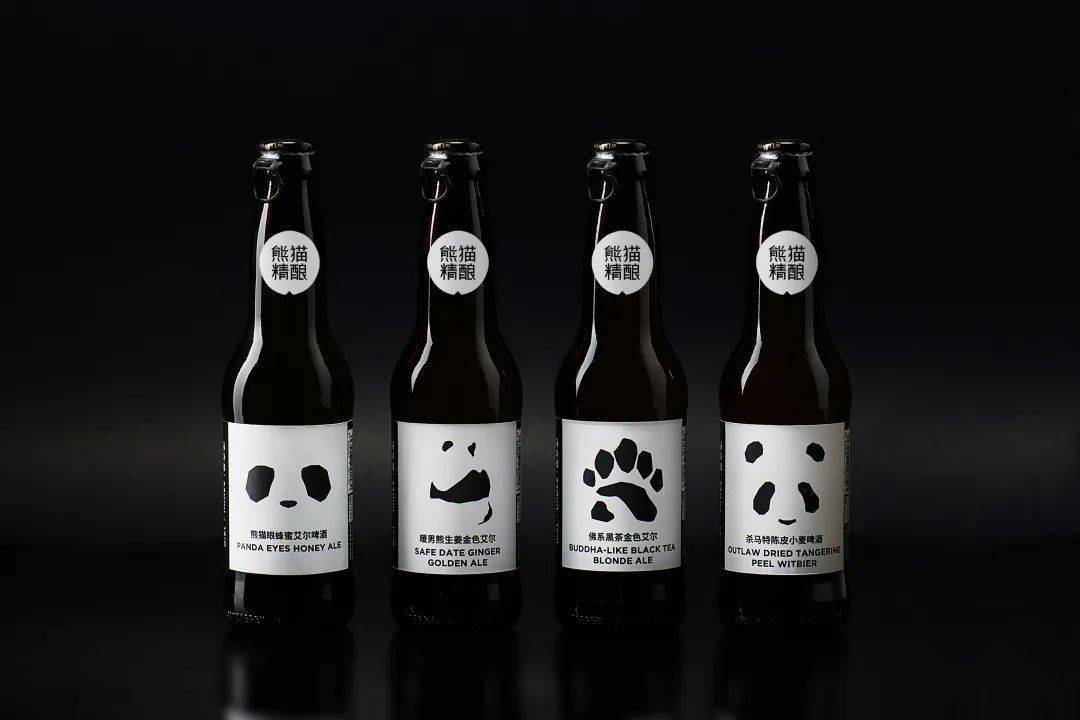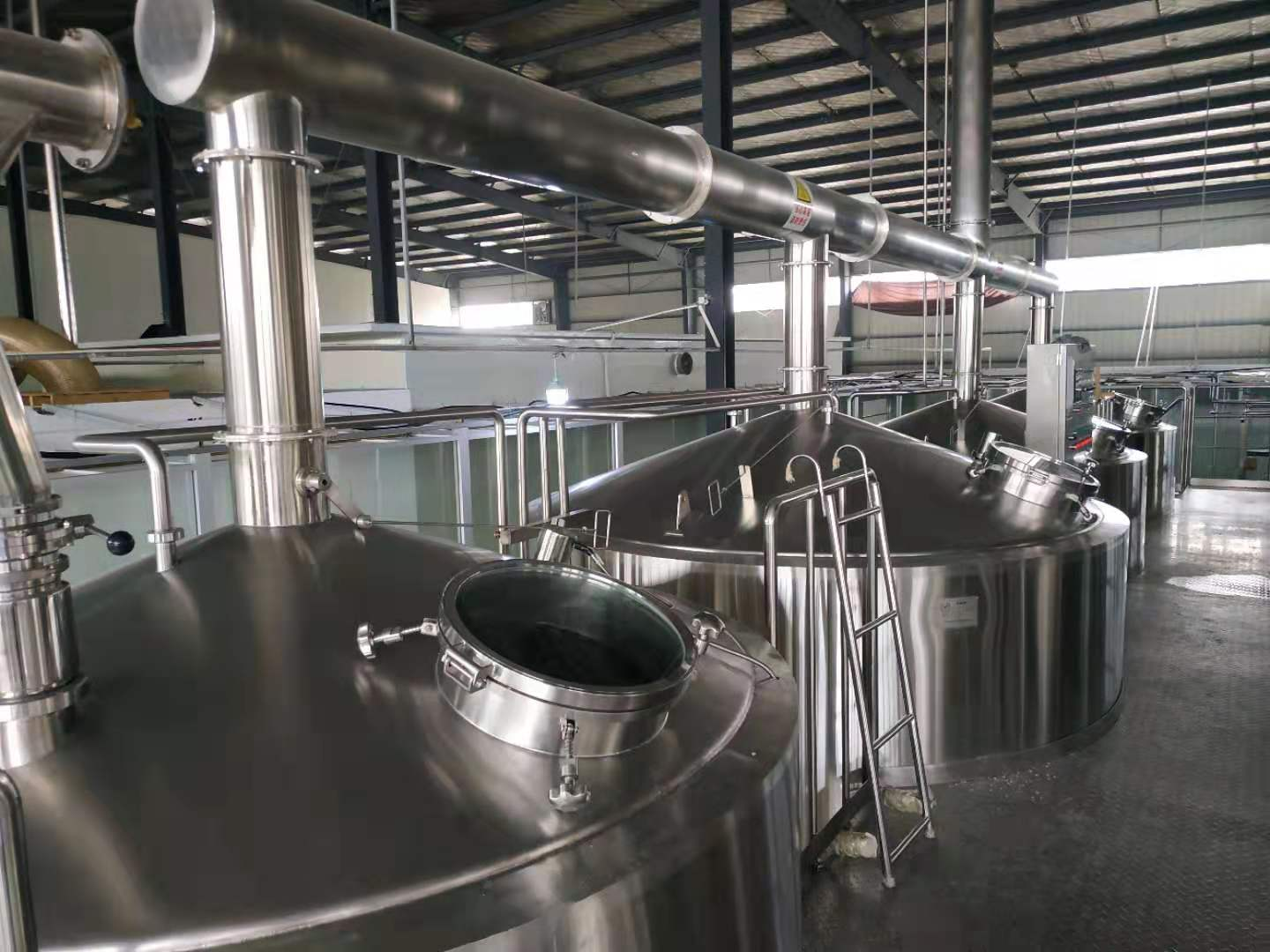How much do you know about craft beer?
Release time:
22 Sep,2023
Do you only know Qingdao and Snowflake when drinking beer? Then you're out, craft beer is now popular!

Image source: Panda Craft official website
Data shows that with the development trend of high-end and healthy beer products, the consumption of craft beer has expanded surprisingly, with a high growth rate. It is expected that the consumption of craft beer in China will reach 2.5 billion liters by 2025, a year-on-year increase of nearly 30%. CICC predicts that the craft beer market will continue to maintain a high-speed growth momentum in the next five years, with the scale of the craft beer market reaching 134.2 billion yuan in 2025, accounting for 17.2% of the overall beer market size.
Craft beer has gradually entered the field of mass consumption, and many enterprises have begun to layout the craft beer race track. In addition to Panda Brewing, Dayue, Youhang, Beiping Machinery and other craft beer entrepreneurial brands that have taken root in the market, traditional beer enterprises such as Tsingtao Beer, Chongqing Beer, Yanjing Beer, the Pearl River Beer are also developing craft beer products, and the industry competition is intensifying.
Craft beer not only has a high popularity within the industry, but also has attracted many cross-border players. Dingdong Maicai launched its first self owned craft beer brand "1972 Farm", Meituan launched craft original German wheat white beer, and catering chain brands such as Haidilao and Banu also rushed to join the competition. The latest data from Enterprise Inspection shows that in the first half of 2022 alone, China added as many as 1645 craft beer related enterprises, an increase of 21.8% year-on-year.
The Achievements of Hippie Culture
Craft beer is different from the common industrial beer produced by factories. According to the definition of craft breweries by the American Brewers Association (BA), it is small, independent, and traditional. Specifically, small-scale production ranges from 6 million to less than 6 million barrels per year; Independence means that the distillery itself must own, control, or equivalently own at least 75% of the property rights of the distillery. As a distillery, its property rights cannot be purchased, managed, or controlled by more than 25% of other non distillery liquor enterprises; Traditional breweries need to use traditional or innovative raw materials and follow traditional or innovative brewing methods to achieve the taste of beer they brew.
The birth of craft beer cannot be separated from the hippie culture in the United States. Hippies oppose mainstream culture, hope to break away from the real world, emphasize spiritual freedom, and therefore dislike the highly industrialized beer industry. In 1965, the American home appliance company Meitaige Group inherited a rebellious family and acquired a dying brewery, Iron Anchor Beer, and invested a large amount of funds to insist on brewing whole wheat beer at high cost. The operation of this brewery is more driven by emotions and rebellion, thus "Anchor Beer" has become a benchmark of American craft beer culture. Later, influenced by the trend of "returning to nature", craft beer became popular and embarked on the path of commercial development.
Craft beer not only has a more mellow taste than traditional industrial beer, but also adds a sense of quality, culture, creativity, and inclusiveness, which is also the difference between craft beer and industrial beer.
Current Development Status of China
Chinese craft beer entered a stage of rapid development around 2015, and the market showed a "blowout" growth. From capital to the beer industry, efforts are being made to craft beer. Especially after entering the consumer market after the 2000s, the emphasis on personalization and texture coincided with the connotation of craft beer, and thus was widely welcomed on the consumer end. At present, the sales channels of craft beer are becoming increasingly diversified, with shadows both online and offline. Whether it is a specialized craft bar or retail platform, craft beer can be seen everywhere.
As a dark horse in the emerging consumer market, the craft beer market has always been in a relatively niche category. Even though it has expanded in many markets and now, it is still insufficient compared to the huge beer market. The reasons are as follows:
Conceptual limitations make it difficult to grow
From the above definition of craft beer, it can be seen that craft breweries require a production capacity of 6 million or less barrels, and non craft breweries cannot account for more than 25% of the shares. This greatly limits the development scale of craft beer. Increasing production capacity not only does not meet its definition, but craft beer will also lose its inherent value and become an industrial beer with a different flavor.
Unique production, difficult to mass produce
Craft beer is different from industrial beer produced on factory assembly lines, where different brands have different formulas. Generally, standardized and large-scale equipment in factories cannot meet the brewing needs. To accurately restore the flavor of the formula, it is necessary to customize the machine equipment according to the formula, which costs a lot. At the same time, due to the long brewing time required, customized machines may also have differences, and the quality of raw materials varies, which can lead to poor final products. Therefore, large-scale production is difficult for many craft breweries, especially for new brands, and forced to choose a substitute factory to ensure product quality.

High requirements for cold chain transportation
At present, many craft beers on the market have added a certain amount of live yeast, which determines that craft beers have extremely high requirements for the cold chain and need to be strictly controlled at 0-8 degrees Celsius. At room temperature, yeast fermentation is prone to bottle bursting and other conditions, which can also affect the taste of the product. Retail platforms such as Hema have relatively complete cold chain delivery systems, which can better maintain the freshness of products. However, currently, the scale of craft beer manufacturers in China is generally limited, mainly relying on OEM factories for processing, and there is basically no complete formed cold chain system. Therefore, many brands can only rely on other large platforms or cooperate with other brands, which has poor stability and is not conducive to cultivating user stickiness.
The Road to the Localization of Craft Beer in China
For the craft beer industry, the current is an opportunity for development. How to further penetrate the Chinese market and expand market penetration is a problem that needs long-term consideration.
From the perspective of the product itself, Chinese consumers have higher requirements in taste preferences, quality requirements, and other aspects, pursuing personalization, diversification, and high quality. In order to better meet the needs of young consumers, it is necessary to further subdivide the craft beer field and develop more varieties and flavors. Meanwhile, in recent years, sexuality has gradually become a powerful consumer force in the beer market, requiring brands to pay more attention to the needs of female consumers, delve deeper into the female market, and launch craft beer suitable for women.
From the perspective of product culture, the reason why craft beer receives attention is closely related to the cultural connotations it represents. After entering the Chinese market, in addition to retaining the cultural essence of traditional American craft beer, one can also try to integrate Chinese culture into it, endowing products with a certain characteristic or element of Chinese culture through packaging, design, etc., to create Chinese style craft beer with Chinese characteristics, and develop the craft beer culture belonging to China.
In the emerging market of young consumers, there is still a long way to explore how craft beer can solve problems, attract a new generation of consumers, and embark on a path that belongs to Chinese craft beer.
The article is sourced from Sohu. If there is any infringement, please contact to delete it.
News
If you have any comments or Suggestions, please leave a message to us!
Harbin Shuncheng Creative Technology Development Co,Ltd
Add:China. Harbin welcome road, high kunlun road no. 10 high open area
Tel:+86-451-84325127
Phone:+86-18946013769

Pay attention to our
Copyright © 2023 Harbin Shuncheng Creative Technology Development Co,Ltd | SEO Tag Business license Powered by :www.300.cn Harbin
黑ICP备16002132号-1 黑公网安备 23010202010265号

